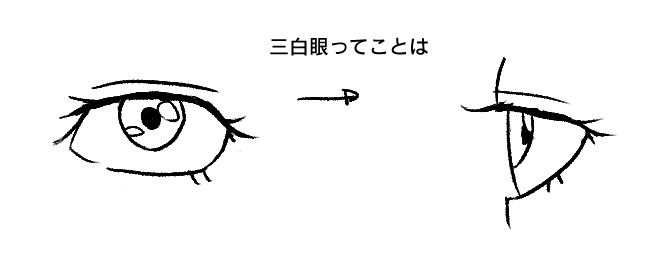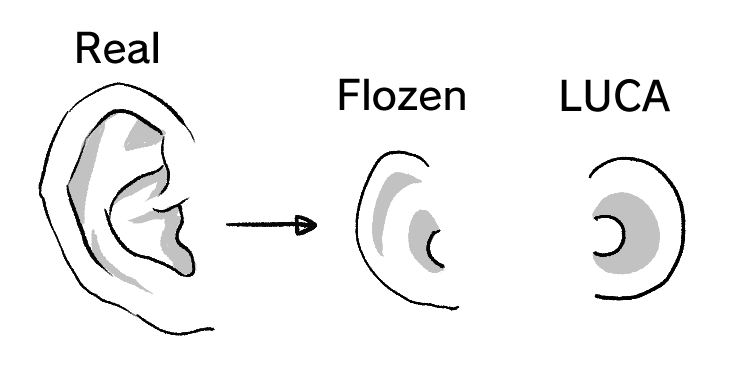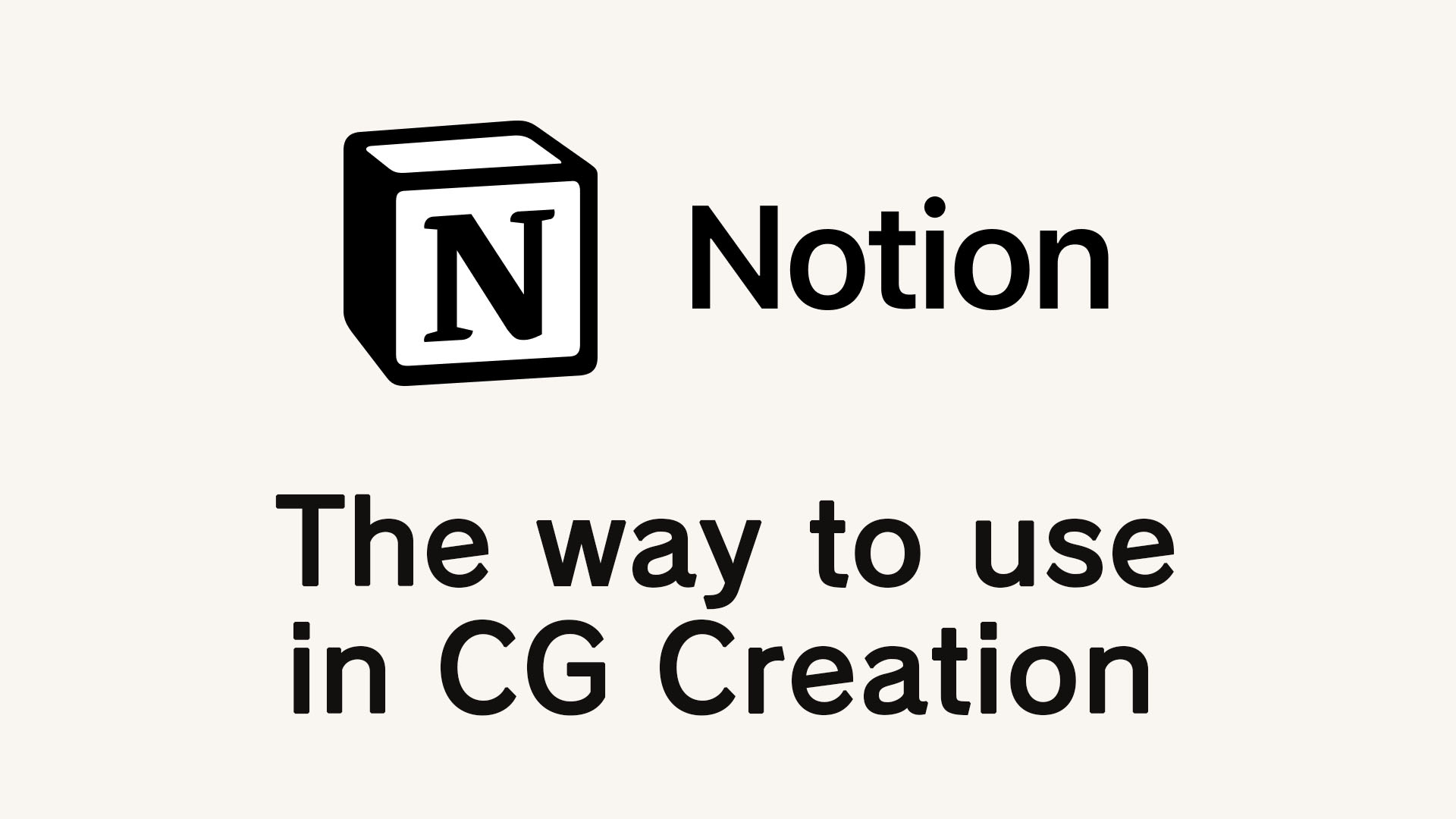“I can’t get it to look like the designer’s drawing.”
“It has a different feel.”
These are common problems when modeling, but first of all, it is necessary to be able to read the “input” part, “what the designer intends to draw it and how designer intends to draw it”.
In this article, I woluld like to introduce the perspective of “Symbols and Reallity” that I keep mind when modeling and directing characters. I think that understanding “manga-picture”, will help you to broaden the range of how you can express your modeling in Anime.
If we can look at “design” from the “designer’s point of view,” we can understand “what the designer wants to create and express”. Then, all you have to do is to think about how to make it three-dimensional. It is difficult to do so, because it differs from person to person, but I think it is important to increase the number of “way of seeing” first.
What are “Symbols”?
There is a theory called “Manga pictures are a mass of symbols” by Osamu Tezuka.
There is a word often used in the world of comics: “symbolism”. There are introductory books on Manga published by various legendary Japanese manga artists, and usually at the beginning they say, “Combine symbols” or “Just doodle and make it look like that”.
This “symbolism” can be applied to various expressions in manga, and refers to “omitting or symplifying elements to make them easier to understand”. In addition to the aspect of being able to easily convey complex things and characterization, it also has the feature of being able to draw with sense of speed in the midst of having to draw a large number of drawings in order to tell a story, and to a certain extent, as long as the symbols are correct, the characters will resemble each other to some extent.


The “symbols” used in manga are a collection of ideas that our predecessors have discovered: “If you draw it like this, it will look like this,” “If you draw it like this, you can easily express a certain element,” “If you draw it liken this, it will be distinctive,” and I think they are like 【the crystallization of ideas for expression】.If you try to paint “without symbolic expression”, it’s very difcult as a painting technique to express what you want to express.
Pictograms are another example. Pixtograms are simplified to convey infomation to anyone with very simple elements without using language, and are the ultimate in “what things that you sinplify the characteristics of something to the maximum extent.


The combination of there “symbols” is the origin of Japanese manga pictures. Osamu Tezuka is said to have said, “It is like hieroglyphs,” whith I think captures the essence very well.
I think of it as a kind of “Fukuwarai”. “Fukurawai” is an ancient Japanese game in which players take parts of a face and place them in their hands while blindfoled, and enjoy the fun of the resulting face. I think this game of making faces by combining “made-up symbolic parts” is a truly unique Japanese culture.
Symbolic and Realistic expression
Let’s take a quick look at the evolution of manga pictures in Japan, leading up to the more recent pictures.
Stream of Realism
Relatively many of the recent cartoon drawings have “realistic expressions” in them, a trend that has been going on since about the 1980s. This is not only true of manga, but also of anime, which used very realistic movements in the 1980s-1990s or so.
It is often said that Japanese manga characters have been represented with “symbolic faces” and “realistic bodies” since that period. A typical example is the “bishojo” characters. Let’s take a closer look at buzzed Japanese illustrations and trendy manga. While the faces have “symblic (cartoonish) expressions”, the bodies are often drawn in “realistic”.
What was it like when it was a symbol?
Conversely, Manga pictures that were common before the 1980s are almost “symbolized” by the body and background as well. Examples from a Japan’s national anime that is still going on today are as follows.
- Sazae-san
- Chibi Maruko-chan
- Doraemon
These Manga pictures are “symbolized” and can be easily drawn by anyone to some extent. It is a nuance that can be drawn in the form of a “Drawing Song”. This is exactly like a “fukuwarai”. Even if the balance is a little poor, it “looks like it”, and anyone can learn to draw it well with a little pactice. (Is that why there are so many manga artists in Japan?)
3DCG, Symbols and Realistic
When looking at this “symbols and realistic expression” what 3DCG is good at is of course “realistic expression”. However, since Japanese Anime picture are based on Manga picture, “Symbols” are included.
Clearly deciphering the balance between “symbols” and “realism” is a very important point in “how designers read pictures when modeling in Anime”. If you misread this, or if you are unaware of it and creates the picture somehow, you will end up with somthing different, even if you only gives it a cell-look.
For example, a symbol is used to express the image, but it is made into a “realistic expresson”. Or, on the other hand, when the expression is “realistic”, it is make flat sculpture, as if to say, “It’s a Anime, so just make the lines appear where they are drawn”.
How to read the symbols
Symbolization is an important expression of Manga, but naturally, there are “real motifs” that exit before they are symbolized.
Japanese Manga picture is a form of symbolic expression of “real objects (motifs)”.
Japanese Anime is the process of moving those “Manga pictures”.
Japanese Anime 3D is the 3D version of the “Anime”.
The point is, “What did the object, which is represented by the apparent symbolism, pick up from the realistic motifs?” It is necessary to analyze “what did the object picked up from the realistic motifs? In three-dimensionalizing, it is necessary to understand the “target motif” and drop the “flat symbol” as a “three-dimensional symbol”. In other words, this is what it means in the diagram.


Let’s look at some common symbolic expressions as examples. As noted above, there are many faces and they are easy to recongnize.
Face
Eye
Here is comparison of the actual picture and the symbolic picture.


For example, one of the difficulties is that sometimes I am not sure whether the line is a double eyelid line or a line expressing the depression of the orbit of the eye.


If i cannot decipher a symbol well, I try to judge it by its “Character”. I try to imagine “if this character were a live-action character, it would look like this”.
I can also tell the shape of the eyes from the position of the pupils when viewed from the side.


If we judge only by the symbols, we tend to create a flat surface, but if we “interpret the symbols,” we can create a three-dimensional object that looks like a three-dimensional object. Of course, if the symbols are strong, there are cases in which we dare to express them in a two-dimensional manner, but the important thing is not to do so “casually” but to do so with a clear “intension” in mind.
Ear
The ears are hard to notice, but the symbols change quite a bit to match the overall symbolism and degree of reality. Surprisingly, the ears of Disney and Pixar works ore quite simple in shape.


Somehow, “ear outer frame” and “ear beads” seem to have a tendency to be drawn if the work has a relatively certain level of reality. However, this could possibly be considered a “deformer” expression, as described below, rather than a “symbol”.
Hair
The hair of Manga is amaizing. Some people draw their characters almost exclusively with it anymore. Interpretation of hair symbols is especially necessary “when it moves”.
For example, the “jagged” hair often seen in Japanese shonen manga has a strong “symbolic” meaning, so even if it is done in 3D, the symbol of “that jagged” hair needs to be retained to make it three-dimentional. Rather than “capturing the hair realistically”, it should be captured as a “shape” in a sense, as if the hair were jagged. Even when it moves, it is basically “jagged” through there is a “direction of movement” and a “fluttering of the bundle” kind of thing.
Other “symbols” include the “ahoge(cowlick)” that some characters definitely have on top of their heads. Also, when expressing a sleeping habit, if you make the “playful hair” moved around, it can be used as a “symbol” to express that the hair is disheveled.
On the other hand, a “weak symbolic design”, in other words, a “realistic design”, can be expressed as hair. In other words, the person who draws it must be aware of this. If this is the case, it is necessary to know what “realism” is. If you look up “what is this haircut?” If you reproduce the hair in three dimensions, it is easy to establish it as a three-dimensional object, and it often does not look out of place.


It is often the case that “this haircut and this haircut combined will probably good”. It is easier to put it into 3D if you carefully research the references, analyze the hairstyle, and be aware of things like where the hair is flowing and where it is tied up.
Body
The most obvious example is probably “One Piece”. For example, if you draw Luffy’s “arm extending” realistically without “symbolizing” the setting, it would look weird. You could “symbolize” this and draw straight lines.
If you interpret it that way, it seems to me that we need to divide the expression into the following when we make it three-dimensional objects.
When extended, it is a “cylinder”
When it is normal, it is “arms”
“Symbollization” and “Deformation” and “Realization”
Defromation
Sometimes “sybolization” and “deformation” seem to be the same, but sometimes i feel they have different meanings.
For example, it is easy to understand if you imagine SD characters. The process of “SD Characterization” is itself “deformation”. However, the reason why we can recognize them as “characters” is because “certain elements are the same” in both the original character and the SD chracter. I feel that this can be called the “symbol” in that character.
I think that a well-designed character can be recognized as a character no matter how deformed or how slightly the drawing is disrupted, because the “symbolic expression” is very well done and the design has originality.
In that sense, the “ear” example above may be more of a “deformation” than a “symbolization”. “Words” are difficult, but I feel that we usually use “symbols and deformation” together in a conceptual sense without paying this much attention to them.
Realization
“Cosplay” is the “Realization” of character. This is also important to interpret the “symbols” and if you understand the “motifs” and put them into live-action, you will be left with the impression of them.
Parameter adjustment based on “Symbols”
If you can adjust the parameters of “realism” and “deformation” based on these “symbols”, your ability to express yourself will improve. Also, if you look at various works of art while keeping this point in mind on a regular basis, your ability to interpret the “symbols” will also improve.
In the example above, I focused only on the “shape element”, but if you take in the “symbolic characteristics” such as “sanpaku-eyes”, “slanted eyes”, “down-slanting eyes”, “hook nose”, “thick eyebrows”, which are the “characteristics for characterization”, you will get “like the character” that cannot be expressed just by following the lines.
I think that well-done SD characters and cosplay can be very helpful in the sense that you can see many different interpretations and conversions.
Animation Designs
I think that one of the tasks of “animation design” in Sakuga (i.e., making the original work into pictures that can be moved in animation) is to adjust the sense of “realism, presence, and deformation” by leaving these “symbols” in place. Althrough there is a tendency for animation pictures to be more “three-dimensional” in order to be “moveble”, I think the “symbolic sense of the original work” is still there.
In this way, “modeling” could be called “a kind of animation design for drawing in 3D”.
It is important to “know” the object well
【How do we raise the level of readability?】
It is “to know the object (real) well”. Therefore, as is often said, it is very important to “create while carefully looking at references (reference materials).
To give you another example, if you are creating characters, it would not hurt to study anatomy, which at first glance may seem far away from the study of “Anime Models”. Modern Anime designs often follow the human anatomy more closely than you might think.
The more you understand the “real subject”, the more you can draw from it for conversion. When you think, “What are these lines…?”. If you carefully examine the “real object” and observe it, you may discover that “Oh, the designer is drawing this!”. Then, the “way of seeing” will change. This will change the way you see thing, and you will be able to see a “sense of balance” that you ware not aware of before.
Anime pictures are drawn simply to reduce the number of lines. However, if you do not know the subject matter well and create a model in an appropriate manner, it will usually break down when it moves, or it will look strange when it is rotated and viewed as a 3D object. This discomfort often remains even after the object has been made cell-look.
A single line drawn casually contains a great deal of information, so “the ability to understand the subject” is very seriously required.
When creating a 3D model, instead of “following lines”, if you know the “source” of “what do you want to express by drawing these lines”, it is pollible to make it as a 3D model. Many of them are three-dimensional.
If you only follow the lines poorly, it will not look like the lines themselves, and it is easy to create a sense of discomfort.
Summary
I feel like I have written something obvious, but i hope it will be helpful to you because when i first started my work, i too “followed only the lines of design drawings and could not see the subject matter”.
This kind of thing is often done among “people who draw pictures” such as Manga, Illustrations, and Sakuga.
I found this book by Tatsuyuki Tanaka very helpful. He is very famous in the world of animation and illustration, and he is also a teacher at a university, so the contents are very easy to understand as “educational material”.
However, this book is Japanese only.
I think it will be easier to create the “target picture” and “what you want to express” if you keep these things in mind ad a base when expressing in 3D.
I think, “Oh, the designer’s symbolization is like that. So, let’s make it like this as the model.” when you are able to imagine such things, you will be able to read the “elements drawn as ‘information’ ” in the setting drawing.









Comments